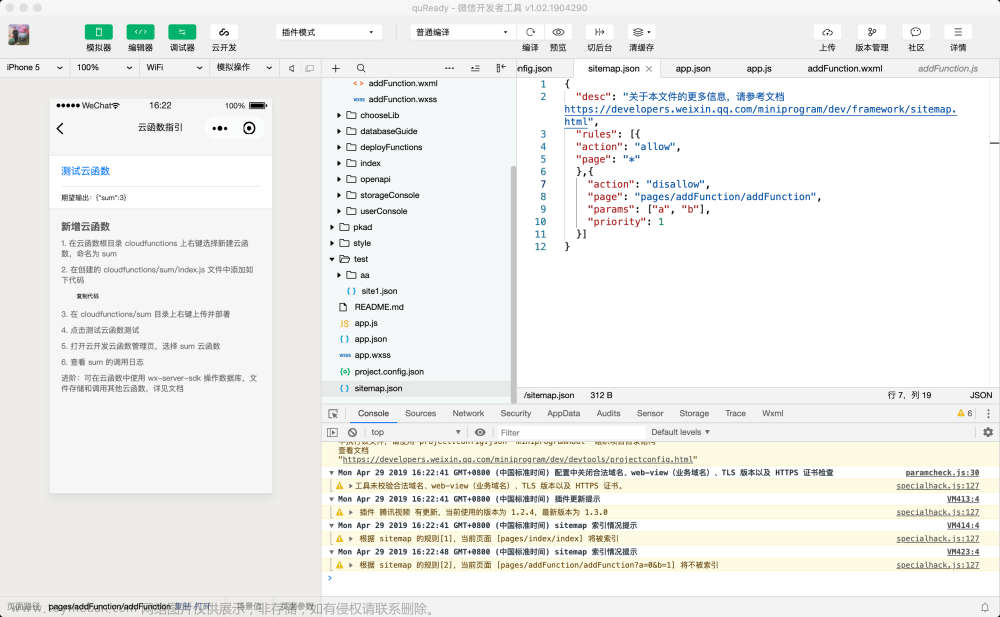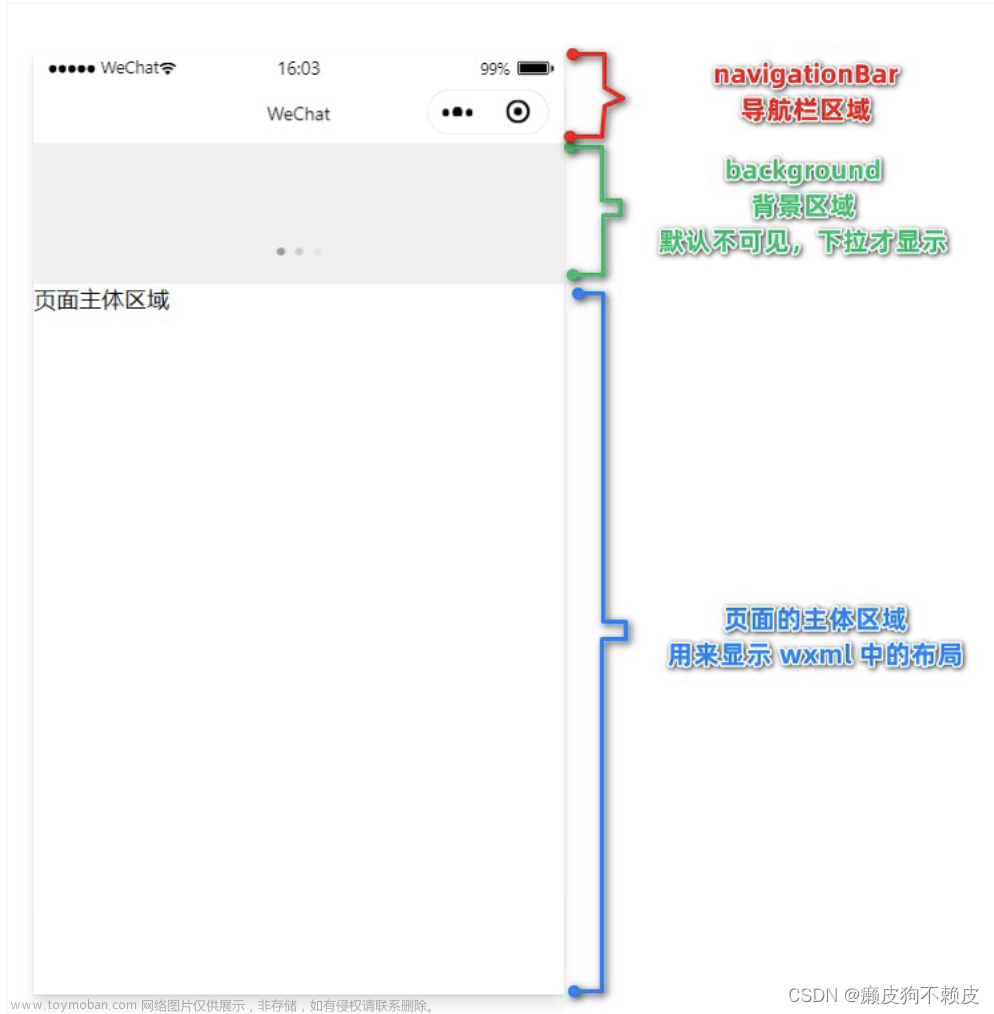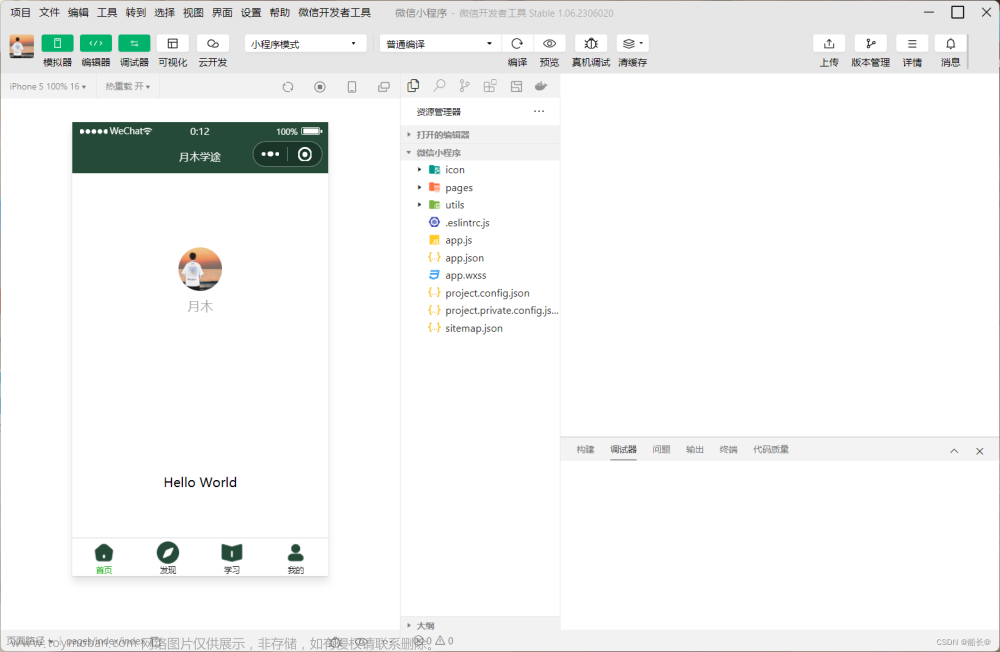一、简介
在小程序中,常常有些数据需要在几个页面或组件中共享。使用 MobX 来管理小程序的跨页面数据, 其实类似于vuex的store。
小程序的 MobX 绑定辅助库。
此 behavior 依赖开发者工具的 npm 构建。具体详情可查阅 官方 npm 文档 。
可配合 MobX 的小程序构建版 npm 模块 mobx-miniprogram 使用。
更为详细的说明和指引,可点击项目地址。
二、使用方法
需要小程序基础库版本 >= 2.2.3 的环境。
可以直接参考这个代码片段(在微信开发者工具中打开): https://developers.weixin.qq.com/s/nGvWJ2mL7et0
1、安装 mobx-miniprogram 和 mobx-miniprogram-bindings
npm install --save mobx-miniprogram mobx-miniprogram-bindings2.、创建 MobX Store
// store.js
import { observable, action } from "mobx-miniprogram";
export const store = observable({
// 数据字段
numA: 1,
numB: 2,
// 计算属性
get sum() {
return this.numA + this.numB;
},
// actions
update: action(function () {
const sum = this.sum;
this.numA = this.numB;
this.numB = sum;
}),
});3、在 Component 构造器中使用
import { storeBindingsBehavior } from "mobx-miniprogram-bindings";
import { store } from "./store";
Component({
behaviors: [storeBindingsBehavior],
data: {
someData: "...",
},
storeBindings: {
store,
fields: {
numA: () => store.numA,
numB: (store) => store.numB,
sum: "sum",
},
actions: {
buttonTap: "update",
},
},
methods: {
myMethod() {
this.data.sum; // 来自于 MobX store 的字段
},
},
});4、在 Page 构造器中使用
如果小程序基础库版本在 2.9.2 以上,可以直接像上面 Component 构造器那样引入 behaviors 。
如果需要比较好的兼容性,可以使用下面这种方式(或者直接改用 Component 构造器来创建页面)。
import { createStoreBindings } from "mobx-miniprogram-bindings";
import { store } from "./store";
Page({
data: {
someData: "...",
},
onLoad() {
this.storeBindings = createStoreBindings(this, {
store,
fields: ["numA", "numB", "sum"],
actions: ["update"],
});
},
onUnload() {
this.storeBindings.destroyStoreBindings();
},
myMethod() {
this.data.sum; // 来自于 MobX store 的字段
},
});三、Typescript 支持
从 2.1.2 版本开始提供了简单的 TypeScript 支持。
新增两个构造器 API,推荐优先使用下列新版接口,你也可以继续使用旧版接口,详见接口说明。
1、ComponentWithStore
import { ComponentWithStore } from "mobx-miniprogram-binding";
ComponentWithStore({
options: {
styleIsolation: "shared",
},
data: {
someData: "...",
},
storeBindings: {
store,
fields: ["numA", "numB", "sum"],
actions: {
buttonTap: "update",
},
},
});2、BehaviorWithStore
import { BehaviorWithStore } from "mobx-miniprogram-binding";
export const testBehavior = BehaviorWithStore({
storeBindings: {
store,
fields: ["numA", "numB", "sum"],
actions: ["update"],
},
});四、接口
将页面、自定义组件和 store 绑定有两种方式: behavior 绑定 和 手工绑定 。
1、behavior 绑定
behavior 绑定 适用于 Component 构造器。做法:使用 storeBindingsBehavior 这个 behavior 和 storeBindings 定义段。
注意:你可以用
Component构造器构造页面, 参考文档 。
import { storeBindingsBehavior } from "mobx-miniprogram-bindings";
Component({
behaviors: [storeBindingsBehavior],
storeBindings: {
/* 绑定配置(见下文) */
},
});也可以把 storeBindings 设置为一个数组,这样可以同时绑定多个 store :
import { storeBindingsBehavior } from "mobx-miniprogram-bindings";
Component({
behaviors: [storeBindingsBehavior],
storeBindings: [
{
/* 绑定配置 1 */
},
{
/* 绑定配置 2 */
},
],
});2、手工绑定
手工绑定 适用于全部场景。
做法:使用 createStoreBindings 创建绑定,它会返回一个包含清理函数的对象用于取消绑定。
注意:在页面 onUnload (自定义组件 detached )时一定要调用清理函数,否则将导致内存泄漏!
import { createStoreBindings } from "mobx-miniprogram-bindings";
Page({
onLoad() {
this.storeBindings = createStoreBindings(this, {
/* 绑定配置(见下文) */
});
},
onUnload() {
this.storeBindings.destroyStoreBindings();
},
});3、绑定配置
无论使用哪种绑定方式,都必须提供一个绑定配置对象。这个对象包含的字段如下:
| 字段名 | 类型 | 含义 |
|---|---|---|
| store | 一个 MobX observable | 默认的 MobX store |
| fields | 数组或者对象 | 用于指定需要绑定的 data 字段 |
| actions | 数组或者对象 | 用于指定需要映射的 actions |
fields
fields 有三种形式:
- 数组形式:指定 data 中哪些字段来源于
store。例如['numA', 'numB', 'sum']。- 映射形式:指定 data 中哪些字段来源于
store以及它们在store中对应的名字。例如{ a: 'numA', b: 'numB' },此时this.data.a === store.numAthis.data.b === store.numB。- 函数形式:指定 data 中每个字段的计算方法。例如
{ a: () => store.numA, b: () => anotherStore.numB },此时this.data.a === store.numAthis.data.b === anotherStore.numB。
上述三种形式中,映射形式和函数形式可以在一个配置中同时使用。
如果仅使用了函数形式,那么 store 字段可以为空,否则 store 字段必填。
actions
actions 可以用于将 store 中的一些 actions 放入页面或自定义组件的 this 下,来方便触发一些 actions 。有两种形式:
- 数组形式:例如
['update'],此时this.update === store.update。- 映射形式:例如
{ buttonTap: 'update' },此时this.buttonTap === store.update。
只要 actions 不为空,则 store 字段必填。
五、注意事项
1、延迟更新与立刻更新
为了提升性能,在 store 中的字段被更新后,并不会立刻同步更新到 this.data 上,而是等到下个 wx.nextTick 调用时才更新。(这样可以显著减少 setData 的调用次数。)
如果需要立刻更新,可以调用:
this.updateStoreBindings()(在 behavior 绑定 中)this.storeBindings.updateStoreBindings()(在 手工绑定 中)
2、与 miniprogram-computed 一起使用
与 miniprogram-computed 时,在 behaviors 列表中 computedBehavior 必须在后面:
Component({
behaviors: [storeBindingsBehavior, computedBehavior],
/* ... */
});3、关于部分更新
如果只是更新对象中的一部分(子字段),是不会引发界面变化的!例如:
Component({
behaviors: [storeBindingsBehavior],
storeBindings: {
store,
fields: ["someObject"],
},
});如果尝试在 store 中:
this.someObject.someField = "xxx";这样是不会触发界面更新的。请考虑改成:文章来源:https://www.toymoban.com/news/detail-483986.html
this.someObject = Object.assign({}, this.someObject, { someField: "xxx" });文章来源地址https://www.toymoban.com/news/detail-483986.html
到了这里,关于微信小程序的全局状态管理 — mobx-miniprogram的文章就介绍完了。如果您还想了解更多内容,请在右上角搜索TOY模板网以前的文章或继续浏览下面的相关文章,希望大家以后多多支持TOY模板网!












